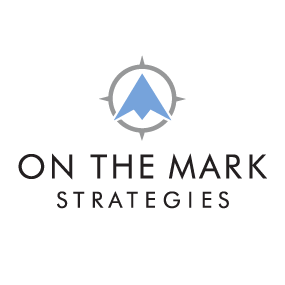Working in credit unions, you all know and understand the compound effect of interest. Most credit unions even teach that key principle in financial education workshops. Your principal and your money grow exponentially over time.
The same effect holds true for marketing: the more you consistently market, the more exponential growth you experience.
As Darren Hardy notes in his book The Compound Effect: “The compound effect is the strategy of reaping huge rewards from small, seemingly insignificant action. Small choices + consistency + time = significant results.”
Yet too many times in credit union marketing land, you fall prey to the temptation to pull back or cut your marketing (because of a lack of results, need to cut expenses and so on). But as Mark Hunter noted recently in a blog post about selling during a down economy: “Don’t take your foot off the gas . . . focus on consistent, daily activities.”
So, what does the compound effect of marketing look like? It means making quarterly, monthly, weekly and daily marketing deposits.
Quarterly deposits: Review what is and isn’t working
Conduct a quarterly after-action item review or some type of review coupled with a quarterly preview. With our marketing and planning clients, we call these quarterly sprints.
Answer the following questions:
- What were 3-5 of your top wins this past quarter?
- How far did you get with your goals?
- What worked and what didn’t work? Why?
- What will you continue?
- What will you change?
Make a “deep thinking deposit” every quarter when it comes to your marketing. Really dive into these questions, identify problems and surface with solutions. The lessons you learn and improvements you make simply by pausing and reviewing on a quarterly basis will amaze you.
Monthly deposits: Create and run campaigns tied to your ALM needs
While you never want to push a “product of the month,” your marketing team should consistently promote products and services that match your ALM and strategic needs. One of the best tactics here is to follow your marketing calendar.
As a bonus tip: we recommend all promotions run in six-week cycles. Shorter than six weeks means it’s often hard to garner enough traction for positive results. Longer than six weeks means the campaign often becomes stale.
As Sarah Arrow of Arrow Marketing noted in her LinkedIn newsletter, “the compound effect means your daily {monthly—my added comment} content marketing activities—be it a social media post, a blog update, or an SEO tweak—build upon each other. It’s not about grand gestures; it’s the regular, often small, tasks that accumulate and make a big difference.”
Make the deposit of promoting specific solutions every month that match your overall strategic plan.
Weekly deposits: Send personalized messages to specific members
Credit unions have tons of data on their members. You need to leverage that data every week by sending specific messages to individuals.
Avoid the “spray and pray” approach. Pull reports that show which members are making ACH payments for car loans and send them an auto-refinance offer. Pull reports that show which members have an auto loan with you but no checking and offer them a free checking account. Those are just a few simple examples. You can get even more robust using tools like propensity to buy and next best cross-sale.
Weekly member messages occur over several touchpoints:
- Emails
- Phone Calls
- Texts
- Messages inside online banking and mobile platforms
- Handwritten cards
The key with all the above is customization to the member. No one likes e-mail . . . they want “me-mail.”
Every week, make the deposit of targeting particular members with specific offers unique to them.
Daily deposits: Ask the “did you know” question
Everyone is in marketing. And that means you want a marketer at every desk. One of the best ways to leverage your marketing efforts is to train your staff to ask the “did you know” question.
This technique means your employees ask members “did you know we...” at every member interaction (teller deposit, loan closing, member service inquiry and so on). For example: “did you know we have a new money market account that is paying a high dividend,” or “did you know you can refinance your auto loan and save $50 per month on your loan payment?”
Why is that question so important? Because research shows that by simply asking that question, you increase sales 20%. Let that statistic sink in. If your numbers are down and you need to increase your sales, then simply get your staff to consistently ask the “did you know” question.
Make the “did you know deposit” every day to connect with members and quickly drive sales.
Improve consistency, improve the compound effect
You never turn off your marketing. In a down economy, it’s more important than ever to market every quarter, every month, every week and every day. That consistency helps you experience marketing’s compound effect.
Of course, you can’t do everything. Prioritize what’s most impactful and important . . . do those items again and again and again. And if it’s too much for you alone, don’t be afraid to outsource. Consistency is worth the effort and investment.








